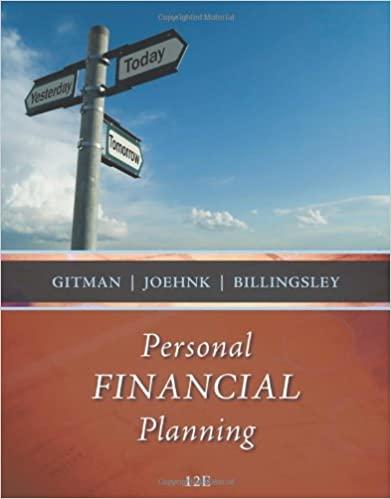Answered step by step
Verified Expert Solution
Question
1 Approved Answer
John Smith is 5 5 years old, married to Kim ( age 5 0 years ) , and they have two children, Susan ( age
John Smith is years old, married to Kim age years and they have two children, Susan age and David age Susan is a fulltime student, taking postsecondary level courses at a university in Canada, and David is in high school. Kim is a lawyer working for a law firm; her net income in the current year is $
John is also a lawyer but he is selfemployed, with his own law practice. Johns net business income from his practice a sole proprietorship for the current year was $
John is also a partner in a restaurant business, which incurred a total net business loss of $ in the current year; as a partner in this business, Johns share of this loss is $ The restaurant business also incurred a large business loss in the previous taxation year, which John was not able to fully utilize on his prior years tax return; hence, John has a noncapital loss carryover balance of $
John owns various investments. In the current year, he received interest income of $ from TD Bank a Canadian bank and a dividend of $actual amount of the dividend from Canco Ltd a Canadian public corporation subject to high corporate tax rates. John also received dividends from Micro Widgets Ltd an American corporation in the amount of US $Canadian dollars $ from which US income tax of US $Canadian dollars $ has been deducted.
In November of the current year, John disposed of various shares and marketable securities which resulted in a taxable capital gain of $ and he disposed of land for a capital loss of $ John has a net allowable capital loss carry forward realized five years ago of $ which John would like to use as soon as possible.
John provides you with the following other information:
His daughter, Susan, was enrolled as a fulltime student taking postsecondary level courses at a university in Canada for eight months of the current year.John paid Susans university tuition fees of $ Susans net income in the current year was $ Susan would like to make the maximum transfer available for tuition, education, and textbook amounts to her father.
John always makes a donation to the United Way, a registered charity, during its annual campaign. In the current year, he made a donation of $ to United Way.
John incurred the following medical expenses during the current year:
Expenses Amount
Orthodontic work for David braces removed $
New prescription eye glasses for Susan
Prescription medication for Kim covered by private health care
Prescription medication for John covered by private health care
Private health care premiums
Answer the following:
Calculate Johns net income in accordance with Section of the ITA and taxable income in the current year. Show all your calculations.
Calculate Johns net federal tax payable including nonrefundable credits in the current year. Show all your calculations and provide ITA references.
John asks you about the rules applicable to loss carryovers. Explain the losscarryover rules to John for a capital losses and b noncapital losses.
John found some medical expense receipts from two years ago that he would like to claim on his current years tax return since he has heard that you can claim medical expenses from another tax year. Can you explain to John the rules regarding calculating the medical expense tax credit and how medical expenses from other taxation years can be utilized to maximize the current years medical expense tax credit?
John provides you with copies of the tax returns for Kim and Susan for the current year. You note that Kim made charitable donations of $ and Susan made a charitable donation of $ during the current year. Should John record these charitable donations on his tax return? Explain why or why not, with advice to John about tax planning for charitable donations.
John has heard about the lifetime capital gains deduction and would like to know what kind of properties qualify for this tax treatment? Would it be possible for John to sell his sole proprietor business law practice and not pay any tax on this disposition by utilizing the lifetime capital gains deduction?
Recently, John was assisting his mother in filing her personal income tax return. Johns mother is an yearold widow and her only sources of income are investment income, Canada Pension Plan benefits, and Old Age Security. John noticed that his mother was paying federal and provincial tax in addition to something called tax payable under Part I John wanted to know what tax under Part is and why his mother was subject to this additional tax. Provide an explanation to John.
Step by Step Solution
There are 3 Steps involved in it
Step: 1

Get Instant Access to Expert-Tailored Solutions
See step-by-step solutions with expert insights and AI powered tools for academic success
Step: 2

Step: 3

Ace Your Homework with AI
Get the answers you need in no time with our AI-driven, step-by-step assistance
Get Started


